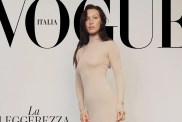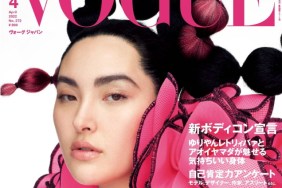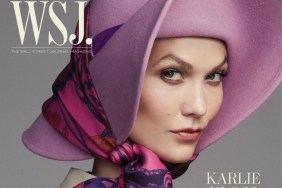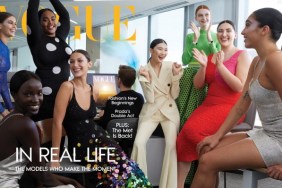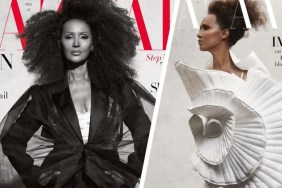tFS: How has the economy impacted your business over the years?
MC: 9/11 had a big impact on us emotionally and financially. It was harder to place the models. The economy had shifted, and so had the demand. That’s when we decided we needed to get odd jobs on the side, so that we could continue to not charge our models. We’re big believers in speaking into your life what your expectation is. We were constantly walking around saying, “We’re going to find the next American supermodel.” Three years later, we found Karlie.
tFS: What’s trending in modeling now?
MC: There was a time when the funky girl was in, and then extreme beauty was big. We like a girl with an interesting twist, and we’re seeing that more. We’re also excited about our curvy girls. We have about six or seven great fuller-figured models that are doing well. Myla DalBesio just booked Calvin Klein lingerie, and Jennie Runk just worked with H&M. This shift in the business is important, and it’s a long time coming.
tFS: What do you think about the diversity in the industry?
MC: It’s a huge issue. We’re a mixed family. It’s unbelievable that this is a conversation in this day and age. We have more girls that we’re developing of every ethnicity, and we continue to want to find more. The fashion industry has gotten a bad rap for how beauty is perceived, but at the core of it, a lot of the decision makers and the designers embrace a broader sense of what beauty is than the average American.
Beauty is so much more than the blue-eyed, blond-haired girl at school. We’re looking for the girl that maybe isn’t perceived as beautiful. A lot of models that we’ve represented and have gone on to succeed weren’t the popular girl that everyone thought was the hot one. I think someone like Binx is a great example. She’s a funky girl with her own aesthetic that the guy at Hooters would not take a second look at.

Tosh Bellington for W Magazine, November 2014
tFS: When you sign a black model, is it tougher to book jobs?
MC: Through the years, we’ve found a variety of models that we thought would have an interest. It was 10,000 times harder to get people interested in the beautiful black girl. People can criticize the diversity of a show and say out of 30 girls, there were only five that were of different ethnicities, but the industry dictates who becomes successful along with the criteria for what it is to be successful, not [the model scouts]. At the end of the day, it’s not the casting directors, it’s the designers who say here’s the aesthetic and the look. They have a lot of influence.
tFS: What’s the solution?
MC: We often tell our models that they are given a platform in today’s world that they can use to speak their truth and create change. Even if the motivation comes from the bottom up and people are forced to be more diverse, I think that commerce is going to have no choice but to listen to the people. It’s already shifting in the right direction.
tFS: What’s your advice for people who want to do what you do?
MC: We always ask people, “Do you have 20 years?” It takes a little bit of time. You may find a girl, but it could take three to five years before it’s financially lucrative, and you have to be OK with that.
tFS: What’s the most challenging part of your job?
JC: Working with your wife. I’m joking!
MC: [laughs] Once you have a lot of successful models, it’s really important to support them, but also make sure to spend the time to mentor and help the new ones. It’s all about balance. Going forward, the challenge will probably be expanding. But we always want to keep the company small and the heart of what makes it special remain. Otherwise, we’d be just like everyone else.

